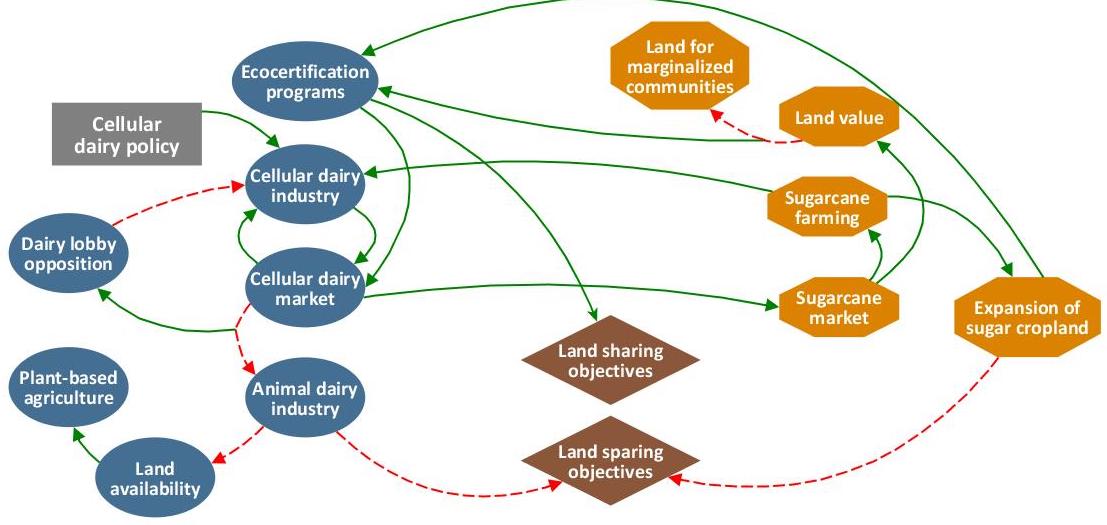Policy Implications of Cellular Agriculture
This page features two papers on the policy implications of cellular dairy. The figure below is take from the paper, Bioengineering, telecoupling, and alternative dairy: Agricultural land use futures in the Anthropocene, and it displays a systems maps of potential interactions that could occur with the implementation policies designed to incentivize cellular agriculture production of dairy products. For more information on this work and other policy considerations related to cellular agriculture, access the papers through the buttons below.

Source: Newman, Newell, Mendly-Zambo, & Powell (2021)
Publications
Mendly-Zambo, Z., Powell, L. J., & Newman, L. (2021). Dairy 3.0: cellular agriculture and the future of milk. Food, Culture & Society. doi.org/10.1080/15528014.2021.1888411
Animal-derived and plant-derived dairy products will soon be joined by dairy produced using fermentation-derived cellular agriculture. Most cellular agriculture literature focuses on “cultured meats,” but fermentation-derived dairy products are likely to reach consumer markets earlier as the technological barriers are much lower. An analysis of literature on dairy and on broader cellular agriculture literature suggests several barriers to adoption, including acceptance of technology, cultural capital associated with animal-based products, and policies that define parameters for producing and marketing dairy alternatives. This paper positions fermentation-derived dairy products within the dialogs on dairy alternatives and on cellular agriculture, identifying key areas that scholars, policymakers, and industry need to address before Dairy 3.0 reaches grocery shelves.
Newman, L., Newell, R., Mendly-Zambo, Z., & Powell, L. (2021). Bioengineering, telecoupling, and alternative dairy: Agricultural land use futures in the Anthropocene. The Geographical Journal.
The global environmental impact of rising consumption of animal products presents significant challenges to sustainable land use. One alternative to the production of animal products is a set of technologies for culturing meat and dairy alternatives referred to as ‘cellular agriculture’; in the case of dairy, cellular dairy. Optimism around the benefits of these technologies is widespread, and they fit within a larger narrative of land sparing, in which high‐yield farming allows the protection of habitats and the return of fallow land to ecological uses. However, questions remain as to whether cellular dairy is truly land sparing because although lab dairy could offer significant ecological benefits, these could be countered by increases in agricultural activity in other regions for the production of feedstocks. In addition, considerations around broader impacts to individuals, communities, and the environment are needed to understand whether/how cellular dairy aligns or conflicts with local, regional, and global sustainability goals. This paper employs the concept of telecoupling, which refers to socioeconomic and environmental interactions over distances, to examine the potential cellular dairy may have for contributing to sustainable food production and consumption.

